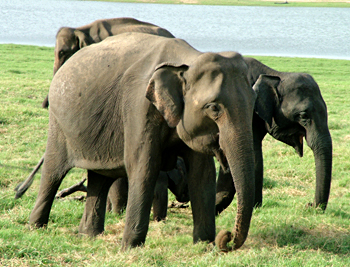 Distinctive Array of Troops which is mentioned in chapter V of Book X in Arthashastra describes the distribution of the army including the infantry, cavalry, elephants as well as the chariots in distinctive arrays. Arthashastra lays down a detailed description as to how the troops are too rearranged within different circles. After ensuring the security of the camps which are to be located at a distance of 500 bows, the invader may decide to begin the war. Having detached all the pieces of attraction which could demarcate the army from quite a distance thus ensuring the safety of the army which has been placed in a position which is favourable to the invader and invisible for the enemy; the commander in chief and the leader can then concentrate in arraying the rest of the army in the way described in the treatise.
Distinctive Array of Troops which is mentioned in chapter V of Book X in Arthashastra describes the distribution of the army including the infantry, cavalry, elephants as well as the chariots in distinctive arrays. Arthashastra lays down a detailed description as to how the troops are too rearranged within different circles. After ensuring the security of the camps which are to be located at a distance of 500 bows, the invader may decide to begin the war. Having detached all the pieces of attraction which could demarcate the army from quite a distance thus ensuring the safety of the army which has been placed in a position which is favourable to the invader and invisible for the enemy; the commander in chief and the leader can then concentrate in arraying the rest of the army in the way described in the treatise.
Distinctive Array of Troops mentions that the infantry should be arrayed such that the space between any two men is a sama (14 arigulas); cavalry with three samas; chariots with four samas; and elephants with twice or thrice as much space (as between any two chariots).With such an array which are free to move and having no confusion, one should fight. A bow means five aratnis (5X24 = 120angulas). Archers should be stationed at the distance of five bows (from one line to another); the cavalry at the distance of three bows; and chariots or elephants at the distance of five bows. The intervening space (anikasandhi) between wings, flanks and front of the army should be five bows. There must be three men to oppose a horse (pratiyoddhgrah); fifteen men or five horses to oppose a chariot or an elephant; and as many as (fifteen) servants (padagopa) for a horse, a chariot and an elephant should be maintained.
Distinctive Array of Troops further mentions that in case of chariots it can be stationed in two flanks which shall include three chariots on each side. In an array of chariots which is considered as even distribution includes the number of 373chariots amounts to forty-five; two hundred and twenty-five horses, six hundred and seventy-five men, and as many servants to attend upon the horses, chariots and elephants. The number of chariots in this array (of three groups of three chariots each) may be increased by two and two till the increased number amounts to twenty-one. The array of odd numbers of chariots gives rise to ten odd varieties, which shall include the surplus of army. Two-thirds of the (surplus) chariots may be added to the flanks and the wings, the rest, being put in front. The added surplus of chariots should be one-third less (than the number added to the flanks and wings).This explains the distribution of surplus elephants and horses. As many horses, chariots and elephants may be added as occasion no confusion in fighting.
Distinctive Array of Troops also mentions the possibility of the contingency of surplus. While excess of army is called surplus (avapa), any deficiency in the infantry which does not have any surplus is called absence of surplus (pratyavapa); excess of any one of the four constituents of the army which akin to surplus (anvavapa); excess of traitors which is far from surplus (atyavapa). As such it has been advised that one should increase one`s army from four to eight times in accordance with one`s own resources and in accordance with the excess of enemy`s army as well as the deficiency in the enemy`s infantry.
Distinctive Array of Troops further explains that in case of arraying the elephants, it can be mixed together with the array of chariots, horses and rearranged in the circles which shall consist of elephants at the extremities of the circle, horses on the flanks and principal chariots. When the front array is composed of the flanks of the elephants, horses, chariots, then it is expected to break the centre of the enemy`s army while a reverse composition in which these are at he rear shall harass the enemy at the time of extremities. The flank of elephants can further be further be rearranged according to which the elephants which are trained for war can fill the front array, while the elephants which are trained in riding and the rough elephants can be placed behind. In case of horses and infantry the front can be placed with those who have mail armour. As such any other change shall be manner according to the changes in the army of the enemy.
Thus Distinctive Arrays of Troops mainly highlights the position of infantry, cavalry, chariots as well as elephants that shall attack the enemy according to the requirement of the battlefield and their respective positions.



















